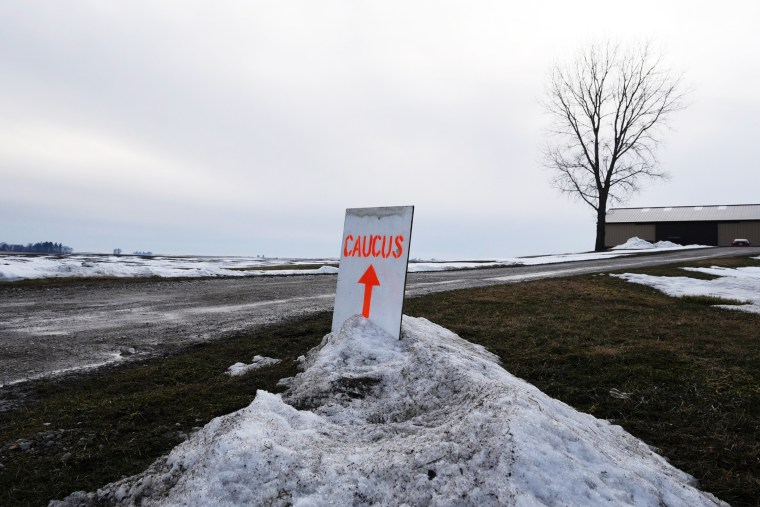We still don't know how the Democratic presidential candidates fared in last night's Iowa caucuses, but party officials have confirmed that voter turnout was "on pace" with the turnout from four years ago. For Dems, that's not exactly good news.
In fact, it seems the pieces were in place for a far more robust showing. Democratic voters are desperate to replace Donald Trump; there was a highly competitive contest in Iowa featuring a large field of candidates; and at least a half-dozen candidates had statewide field operations, practically begging voters to show up in large numbers.
The Washington Post's Karen Tumulty makes the case today that Iowa's "mediocre" turnout is important.
About 170,000 people participated in the 2016 Iowa Democratic caucuses, far short of the unprecedented 240,000 voters who turned out in 2008 and launched Barack Obama on his way to the White House. What was so exciting a dozen years ago was not only how many Iowans showed up, but who they were: young people, first-time caucusgoers, an ethnically diverse mix of voters in an overwhelmingly white state.Until recent days, there had been plenty of buzz among Democrats that this year would set a new record. There was even some loose talk that turnout could reach 300,000, which would be incontrovertible evidence of the passion that their party is feeling about the prospect of defeating President Trump in November.
So far, however, the evidence suggests turnout merely kept pace with the underwhelming numbers from 2016, which showed a drop from the last competitive nominating fight in 2008.
Some caution is probably in order: we don't yet have all the data, and the final tallies may paint a rosier picture for Democrats. That said, if Iowa Democratic officials are correct, and 2020 turnout merely "kept pace" with the results from 2016, it's an inauspicious start to the party's nominating process.
Longtime readers may recall there were similar concerns four years ago. Despite Bernie Sanders' hopes of bringing new people into the process, voter turnout in each of the first four nominating contests -- Iowa, New Hampshire, Nevada, and South Carolina -- fell relative to 2008 totals.
Complicating matters, entrance polls found only about a third of Iowa caucus-goers were first time participants, which is quite a bit lower than the numbers from each of the last several Iowa contests, and further raises doubts about the candidates who've claimed a unique ability to inspire voters who've traditionally steered clear of elections.
Again there's no shortage of unknown variables here, and it's entirely possible that Iowa will be a forgotten blip as the process moves forward. It's just one contest, so it's best not to draw sweeping conclusions without more data.
But Iowa was a test of sorts at these candidates' abilities to turn out supporters after months of concerted effort. If they fell short, it suggests they have a lot of work to do.
